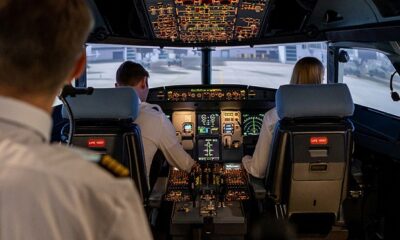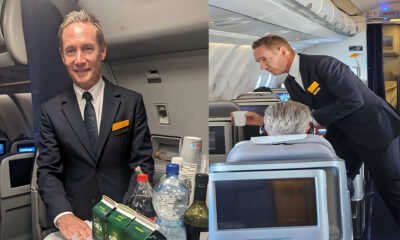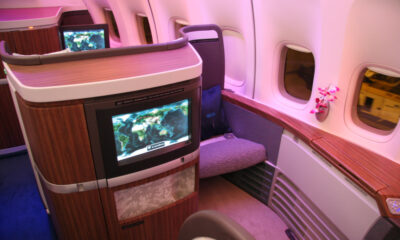Aviation
Pilots training doctors.
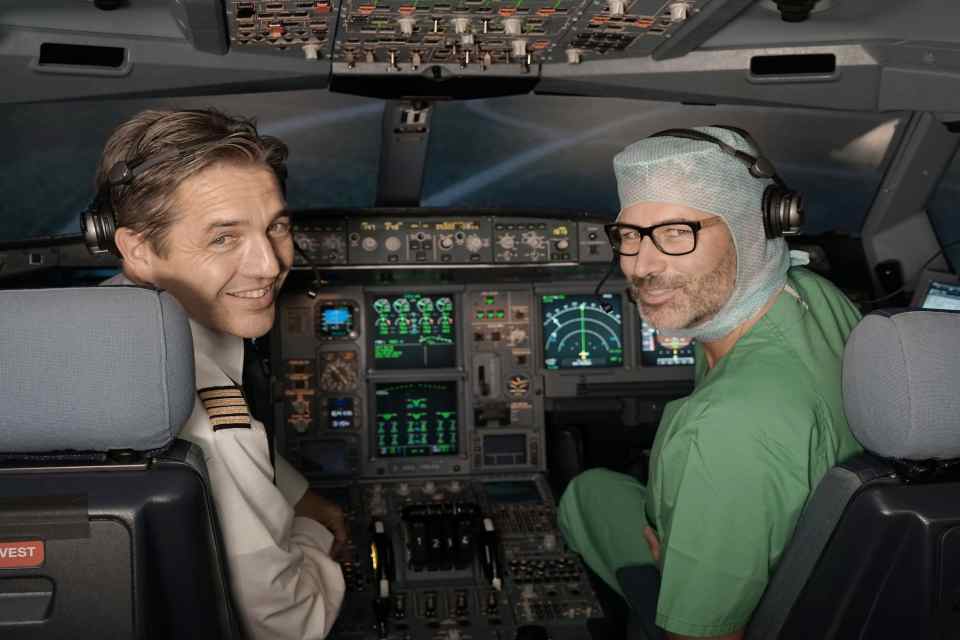
In the airline sector, Human Factors training is a matter of course. Now, Lufthansa Aviation Training is also providing help in hospitals in order to reduce human error
Every third death in a hospital can be traced back to human error. This is the shocking result of a US-American study. Only heart and respiratory diseases are more frequently the cause of patient death. The trade association (BG) accident and emergency clinics have recognized the problem and are now launching a collaboration with Lufthansa Aviation Training (LAT). 1,000 medical staff will learn social competencies from pilots over the next three years. In two-day courses, doctors and nurses will practice how to avoid mistakes made through poor communication, using example videos, role pay and in discussions.
But why are pilots taking over the training for medical staff? Both professions work in hierarchies and have to make decisions in highly complex situations. “The difference,” says LAT project manager Martin Egerth, “is that pilots are prepared for the day that hopefully will never occur, and the doctor experiences this every day.” And despite this, the airline sector is further along: “In aviation, we already recognized in the 1990s, that we need these social competencies and that these are just as important as technical and procedural skills,” says Martin Egerth. There have been several cases in which communication errors led to catastrophes. For example, in 1989, when an aircraft in Dryden in Canada took off with frozen wings and crashed shortly afterwards. 24 people died in the crash. A flight attendant had noticed the ice before take-off, but had not reported it to the pilot.
There are also similar cases in medicine, says Reinhard Hoffmann, Medical Director of the Frankfurt Accident Clinic and General Secretary of the German Association of Orthopedics and Emergency Surgery. The association developed the training together with LAT. Hoffmann says that he once noticed during his time as an assistant physician of a renowned doctor, that this doctor was operating on the wrong patient. “But I was too scared to say anything.” Just like the flight attendant in Canada in 1989.
But this does not just revolve around deaths in medicine: 25 percent of patients in hospitals are involved in avoidable events. In 2016, civil aviation, by contrast, was as safe as never before. Time pressure, a lack of communication or wrong hierarchy thinking are considered the cause of human error. While interpersonal training is a legal requirement in aviation, medicine is still at the beginning of a development towards greater patient safety. And quite incidentally LAT is acquiring a whole new customer group. The BG clinics are investing a six-digit figure in the project. Further information is available at www.interpersonal-competence-training.com

Aviation
All passengers killed in plane crash, after pilot let his children to control the plane

When boarding a plane, passengers entrust their safety to the skilled hands of the pilot. However, tragedy struck when one of the flight ended in disaster as all passengers lost their lives in a horrific plane crash.
In 1994, during a flight from Moscow to Hong Kong, tragedy struck as an Aeroflot relief pilot made a fateful decision. In a move that would have devastating consequences, the pilot invited his own children into the cockpit to play with the controls. Little did anyone know, this seemingly innocent gesture would lead to the loss of all 75 lives aboard the aircraft.
It was a seemingly innocent act that led to catastrophic results. The relief pilot, Mr. Kudrinsky, invited his two children, Yana, 12, and Eldar, 15, into the cockpit during the late hours of the night. Little did anyone know, this simple gesture would set off a chain of events that would end in tragedy.
Once in the cockpit, the children were allowed to sit in the captain’s chair and play with the controls, unaware that they should have been disabled as the plane was in autopilot mode.
Eldar, perhaps in a moment of curiosity or innocence, held the control column down for a mere 30 seconds. Yet, in those brief moments, the autopilot disengaged, thrusting the aircraft into manual control.
By the time the pilots regained their seats and attempted to regain control, it was too late. Despite their efforts to pull the plane out of a dive, they overcorrected, causing the flight to climb almost vertically, ultimately stalling it.
Final moment Flight 593 crash
In the final moments, as the pilots struggled to stabilize the aircraft, Flight 593 crashed into the Kuznetsk Alatau Mountain range in southern Russia, completely obliterating the plane and claiming the lives of everyone on board.
Investigations revealed a chilling truth: there was no evidence of technical failure. Instead, the crash was attributed to the unthinkable decision to allow inexperienced hands to manipulate the controls of a commercial aircraft.
The black box recording captured the harrowing sequence of events, providing a grim reminder of the human cost of a lapse in judgment. In just over two minutes, the lives of all on board were tragically short, leaving behind a legacy of sorrow and unanswered questions.
Aviation
American Airlines Flight Attendant Orders First-Class Traveler to use Economy Restroom
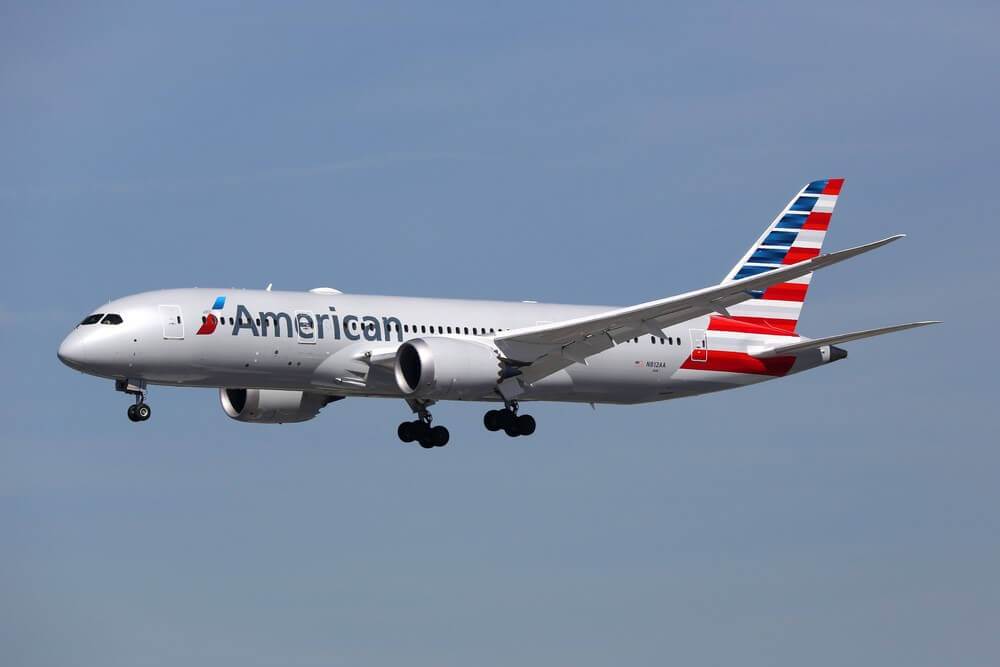
On a recent American Airlines flight from Chicago O’Hare to Phoenix, Pamela Hill-Veal, a retired circuit court judge, found herself at the center of a disturbing incident.
Despite traveling in First Class, she was directed by a flight attendant to use the Economy Class restroom, sparking allegations of racial discrimination. According to Hill-Veal, the ordeal began when she used the dedicated First Class lavatory during the flight. A flight attendant approached her, accusing her of slamming the door and issued a warning.
Despite remaining calm, Hill-Veal faced further confrontation when she attempted to use the First Class restroom again later in the flight. The situation escalated as the flight attendant persisted in berating Hill-Veal, who felt targeted due to her race. She highlighted the disparate treatment, noting that white passengers were not subjected to similar directives.
In a distressing turn, the flight attendant followed Hill-Veal to her seat and allegedly touched her while threatening arrest upon landing. This alarming encounter left Hill-Veal feeling humiliated and traumatized, impacting her ability to rest even after the flight.
American Airlines has responded, expressing a commitment to investigating the matter and addressing discrimination claims seriously. However, the incident underscores ongoing concerns about racial bias in air travel and the need for accountability in ensuring all passengers are treated with dignity and respect.
Aviation
Southwest CEO Signals Major Shift: Farewell to Open Seating
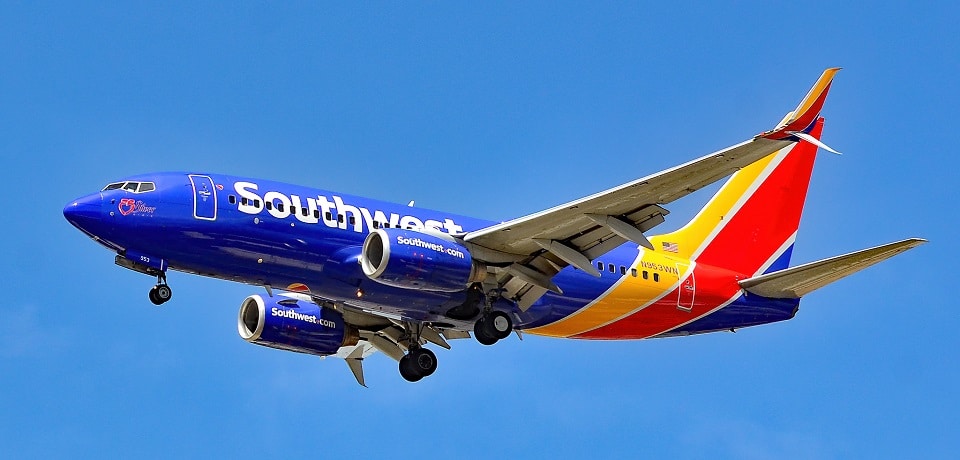
Southwest Airlines is contemplating a significant shift away from its traditional open seating policy, a move that could signal a departure from its long-standing business model.
The potential change, which would introduce assigned seating and premium seat options, is being considered to appeal to a younger demographic of travelers. This adjustment would mark one of the most substantial alterations for the carrier since its inception in 1971.
Unlike its competitors who have embraced premium seating offerings, Southwest has stuck to its open seating approach, albeit providing the option for early boarding at a fee. However, with rivals like United Airlines witnessing revenue growth from premium seating, Southwest is reevaluating its strategy. According to Forbes, the airline industry has seen a shift in customer preferences over time, prompting Southwest to reconsider its seating model designed during an era of lower load factors.
While Southwest CEO, Jordan,told to CNBC that he has neither confirmed nor denied the possibility of premium seating, he acknowledges that the company is exploring various options. He emphasized that while it’s still early in the decision-making process, the initial results are promising, hinting at potential changes in the future.
Southwest currently operates with a single economy class cabin across its all-Boeing 737 fleet, with no assigned seating. However, the airline does offer the option for early boarding for passengers to secure their preferred seats for an additional fee. Over the years, Southwest has maintained a focus on simplicity and user-friendliness in its offerings, striving to minimize costs and complexity.
In contrast, competitors like Delta and United have capitalized on revenue growth from premium seating options such as business class, demonstrating strong upsell rates. Analysts have repeatedly questioned Southwest about the potential for introducing premium seating or additional fees, although the airline has traditionally refrained from charging for the first two checked bags.
For now, the only way Southwest passengers can secure their preferred seats is by paying for an earlier boarding position, as the airline continues to operate without assigned seating, allowing passengers to choose their seats upon boarding in a predetermined order.

